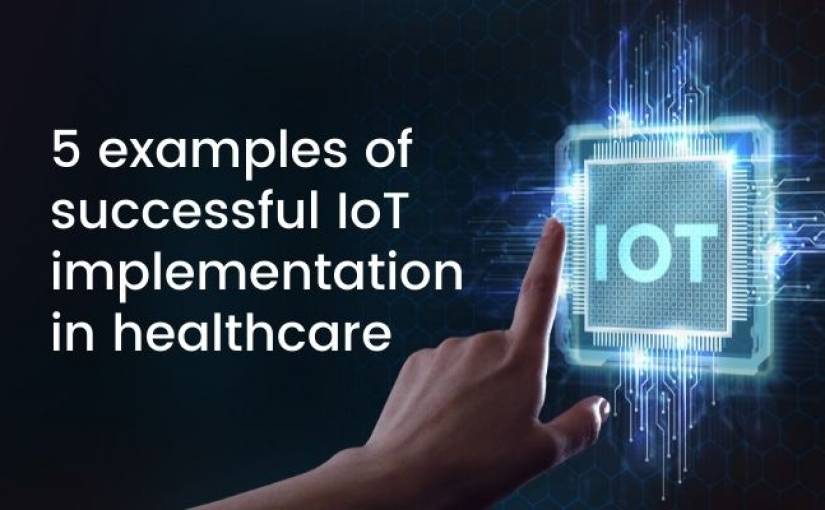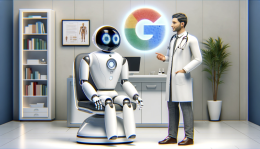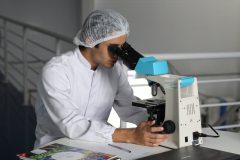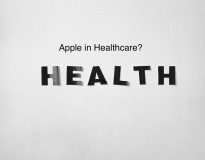Adopting any new technology in the healthcare world is often a slow process. The reason – strict governance around data protection, compliance, and the long-drawn processes around testing new healthcare options. This is, of course, to ensure that there is no compromise to patient safety in any manner.
While IoT adoption was slow initially, today, the benefits far outweigh the concerns. Remote patient monitoring using IoT in healthcare and faster diagnosis due to real-time data capture through monitoring are critical factors enabling smart healthcare.
Before the pandemic, tracking medical equipment via RFIDs was the extent of IoT adoption in healthcare. Smart connected devices did not have any scope to play a value-added role in hospitals. This was mainly due to poor Wifi coverage and strong firewalls to enforce security.
People have been using smart devices to monitor health for parameters such as heart rate, temperature, and blood sugar for some time. However, the health care provider systems were not integrating this data to correlate and diagnose health issues. Doctors, staff, and patients interacted in person or via phone, SMS, and emails.
COVID-19 accelerated the adoption of IoT (or IOMT – Internet of Medical Things) along with AI, telehealth services, and 5G in the Healthcare domain due to several factors such as –
- Social distancing, to safeguard both patients and caregivers.
- Maintaining hygiene, personal protective equipment, and a clean environment.
- Need for regulating patient traffic to minimize risks.
While Telehealth services existed before COVID-19, the adoption was poor. Today, many patients opt for Video or Tele appointments over phone, tablet, or computer for general or specialty care.
What can IoT do for Healthcare?
-
In-hospital care
- Streamlining of processes – IoT and a great patient portal can reduce the inefficiencies of the entire cycle of treating patients within a hospital. Registrations can be done via the patient portal with a trigger from the doctor indicating the treatment on admittance. The hospital management can then allocate the ward based on patient input. The patient can be given a tracking device to monitor the patient continuously. This will highly help the nurses and doctors on entry. The hospital can generate the final release more efficiently based on the IoT devices’ data. This includes medicine intake, vital statistics, and test reports generated. Overall, patient data can help hospitals glean information on departments requiring more resources, sale, and procurement of medicine.
- Monitoring patients and staff through smart devices – Using smart devices, nurses can monitor all patients in the hospital using a common dashboard and alerting mechanisms. Today, smart devices are attached to the patient’s bed that monitor the patient’s vital statistics, oxygen levels, and movement. Doctors and nurses can be tracked and reached out to in emergencies. Walking into an operation theater, they can be reminded to sanitize and wear appropriate gear.
- Monitoring the environment – Wifi-sensors can monitor the quality and shelf-life of medicines and vaccines. Medical assets integrated with IoT can be tracked with alerts in case of failures or maintenance needs.
-
Emergency care
IoT coupled with video/telehealth services and AR can help when the doctor is not available on-premise. It is extremely useful when a remote specialist has to be brought into an emergency operation.
- Even while in an ambulance, the right treatment can be imparted on time if directions can be given to the attending nurse using these technologies. In some countries, drones are already being used for life-saving medicines, blood, and organ delivery to remote or disaster zones.
-
Home care
Wearables and home monitoring equipment integrated with IoT help caregivers provide better treatment with quick response time and lower cost. In chronic illnesses, smart devices can track patient health and alert a medical crisis. Video and teleconferencing reduce in-person visits to the doctor.
- This is very useful, especially for people who live in remote areas, have a disability, or do not lead active lives due to old age. This kind of hybrid care enables follow-up on patients after hospitalization and data for advanced treatment planning, promoting personalization in healthcare.
Five examples of successfully connected healthcare implementations
Here are five examples of successful implementations of IoT in healthcare –
-
Connected inhalers:
Inhalers are used to treat Chronic Obstructive Pulmonary Diseases (COPD), i.e., Chronic inflammatory lung diseases such as Asthma. They are of two main types –
-
- Chronic Bronchitis – causes long-term cough with mucus
- Emphysema – results in damage to the lungs
-
People suffering from COPD often have unpredictable attacks. Inhalers provide the required medication directly into the lungs, but its effectiveness depends on how much of the medication goes into the lungs. A short delay between inhalation and drug delivery can reduce the amount of medicine absorbed. Also, patients with COPD need to take a disciplined approach to take care of their health.
IoT-connected inhalers can therefore help by monitoring the frequency of attacks, collecting environmental data such as air quality to understand what triggered an attack, and tracking the actual intake of medicine.
This connection via Bluetooth to mobile devices and corresponding apps can provide necessary data points for the doctors to understand the patient’s level of illness. It will help modify dosage accordingly or proceed with alternative treatment.
In addition, these smart inhalers can also alert patients to take them along while leaving home or even find them at home.
ProAir Digihaler is an IoT integrated inhaler developed by Jerusalem-based Teva Pharmaceuticals. It requires a prescription and is usable by 4-year-olds and above. The inhaler connects to its mobile app, recording data such as the amount of inhalation and the corresponding timestamp. It can instruct the patient to use the device regularly and correctly.
2. Personal health monitoring
Wifi-enabled wearables that track the user’s vitals, activities, and overall environment have been in the market much before hospitals opened the gates for IoT. Many wearables such as smartwatches, pedometers, smart bracelets, and other jewelry track heart rate, body temperature, sleep patterns, steps climbed, or distance covered in a day.
This includes pandemic-related parameters such as oxygen levels and alerting mechanisms to keep hands sanitized. Tying this data back to the healthcare provider enables preventive care and can check the deterioration of the patient’s conditions.
Apple Watch Series 6 enhances the previous series, which gives the user oxygen saturation levels with greater accuracy. This and heart rate monitoring will provide insights into early signs of respiratory conditions.
From Apple Studies by Joe Wituschek — “Apple is also working with the University of California, Irvine, and Anthem to research how longitudinal measurements of blood oxygen and other physiological signals can help manage and control asthma.”
3. Home monitoring of chronic diseases
Multiple interconnected IoT devices can be used to manage medications, symptoms, and vitals at home. The data from the devices are pushed to the platform on the cloud, which monitors and sends out alerts to caregivers and family members based on the condition. The platform also tracks the effectiveness of the drugs administered to make necessary changes to the dosage.
Quio is one such cloud platform that monitors chronic illnesses and enables patients with better healthcare, lesser in-patient visits, and even lesser ER scenarios. It also provides a platform for patients to enroll in research anonymously.
Pfizer and IBM recently developed a “Parkinson’s house” that has sensors on everything, which helps detect even the slightest variation in a patient’s movements. Cloud platforms help store this data for further analysis. Scientists then use it to analyze the patient’s progress and medication responsiveness.
4. Asset monitoring
As per GE Healthcare, there is complete utilization for only 38% of hospital inventory. The rest is often misplaced, stolen, or just cannot be found when needed. In addition to the lack of visibility, poor maintenance of healthcare equipment also incurs a massive cost to the hospitals.
IoT devices integrated with healthcare equipment help track the equipment at all times. It facilitates quick response time in an emergency. Therefore, it helps in streamlining the quality and maintenance of the equipment with the data collected regularly.
NexLeaf Technologies is one such company working towards improving healthcare in less developed countries. One of its products, ColdTrace, provides remote tracking of vaccine refrigerators to enable caregivers to use vaccines and medication safely and judiciously.
5. Insurance Incentive
Insurance companies adopt IoT wearables like fitness bands and phone applications to incentivize their customers and discount their health premiums. Not only is it beneficial to their customers, but great for the insurance business.
Boston-based Manulife Insurance’s insurance unit John Hancock gives a 25% discount on health insurance for all those open to using an app and other gadgets to monitor their health. The John Hancock Vitality Program is a tie-up with Vitality that distributes free Fitbits to track and advise on an individual’s health.
It also offers the Vitality Aspire program for Diabetes Type1 and Type2 patients with diabetes management tech provided by Onduo.
How to ensure a successful rollout for IoT solutions in healthcare
IoT Architecture comprises of –
- Sensors, actuators, and other detection devices that collect data. In the field of healthcare, this may include healthcare equipment such as wheelchairs with IoT devices. Other examples include devices that measure the vitals of patients such as temperature sensors, smartwatches, ECG monitoring, etc.
- Data from the sensors and actuators in the digital format, since some could be analog devices. This can be by a mobile device, tablet, or desktop.
- Storing digital data on the cloud, after processing and standardizing.
- Data analysis for efficient decision-making. In this case, it would be achieving the correct diagnosis, improving or changing the treatment, monitoring medication in the case of a patient. In the case of healthcare equipment, it provides visibility into actual usage, maintenance cost, etc., enabling streamlining of processes. The use of AI helps in mining the data and providing a faster means to diagnose or treat.
Capabilities of IoT solutions in healthcare include –
- Monitor patients.
- Track staff so that it is easier to reach them during emergencies.
- Keep tabs on high-value equipment to prevent theft, failure, or any maintenance thresholds,
- Ensure High security and compliance since the number of connected devices is large,
- Higher usage of smart devices result in greater cost-effectiveness
- Ensure safety and privacy of data at all costs.
Ensuring successful implementation of IoT in healthcare
A successful rollout of Healthcare IoT (HIOT) architecture would require a good WLAN for enabling connectivity across devices. It would need a robust IT infrastructure to enforce high security across the various connected devices and platforms.
Going with cloud-native or hybrid or on-premise IT infrastructure would depend on the existing systems in the landscape that would be critical to integration, HIPAA guidelines, and other compliance policies. The architecture will need a support platform to maintain the smart devices. This is because the reliability of an IoT Healthcare system depends on its functioning.
Fog architecture is becoming more common. Hence the data collection and processing happen at the nodes. E.g., a Heart Rate Monitor measures the current heart rate and can track variations and notify critical changes or levels.
The output data is in a standard digital format. This is because of the processing of data at the collection point. This enables the use of existing network infrastructure for communication.
Image Credit: Provided by the Author; From Blog IoT Healthcare; Thank you!










